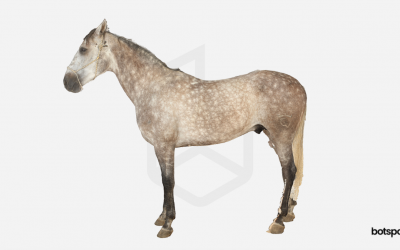HOW DOES PHOTOGRAMMETRY WORK AND WHAT IS IT USED FOR?
WHAT IS PHOTOGRAMMETRY?
Photogrammetry is a method that merges photography with geometry: a fascinating technology with an enormous range of applications. In this post, we’ll take a detailed journey through the world of photogrammetry, understanding how it works and exploring its diverse applications. Photogrammetry extracts three dimensional information from two dimensional photographs in order to generate a three dimensional visualization. The process typically involves capturing a series of images of an object or area from different angles and then using software like RealityCapture to generate accurate 3D models. This method has revolutionized how we capture and interpret the physical world in digital form and allows us to replicate anything in real life digitally.
HOW DOES PHOTOGRAMMETRY WORK?
The process involves a combination of photography and photogrammetry software. Here is an in-depth look:
Capturing Images: The foundational step is acquiring multiple, overlapping photographs of the subject.
The number and quality of these images will directly impact the final outcome, so it is recommended to use high-resolution cameras and lenses. However, any camera will suffice, even the one on your smartphone. The key is to capture the subject from as many angles as possible. This provides the software with enough information and reference points to build the 3D model.
Processing Images: Once captured, these images are fed into photogrammetry software, such as RealityCapture.
This software is engineered to identify common reference points, for example details, markers or unique features in the different images. These can then be used to perform complex calculations which triangulate the distances and orientations of the subject’s surfaces. The result of this is a “point cloud”, which is the first step in creating our 3D model.
Creating 3D Models: For the final step, the software stitches the images together, applying textures and colors from the photographs to the 3D model.
To do this, the software uses the camera positions of the pictures to project the textures from the photographs which were already defined in the first step of processing images. Additionally, advanced processing might include steps for refining texture, enhancing resolution, or integrating other data sources to create more comprehensive models for specific purposes.
APPLICATIONS OF PHOTOGRAMMETRY
Photogrammetry has a wide array of applications, which can be broadly categorized into four groups:
E-Commerce: Digital fitting for fashion marketing campaigns and creating virtual showrooms to present scanned products in a location-independent, digital world.
Health Care: Photogrammetry can aid in the accurate capturing of skin and provide diagnostic support in dermatology to produce true-to-life prosthetics and post-processing-free 3D digitization of surgical specimens, organs or tissues.
Entertainment Industry: In movies and video games, photogrammetry is used to create lifelike environments and characters, enhancing realism and shortening the workload of CGI artists.
Industry Applications: The use of precision 3D models can make industrial processes more efficient and cost-saving. Photogrammetry can provide highly accurate 3D data and models for quality control, reverse engineering and digitalization.
THE FUTURE OF PHOTOGRAMMETRY
Photogrammetry is a technology that effectively bridges the gap between the real and the digital world with applications ranging from e-commerce to virtual reality. Its ability to accurately replicate the physical world in digital form is unmatched.
As we continue to explore and innovate in this field, photogrammetry will undoubtedly unveil new horizons in how we understand and interact with our environment.



